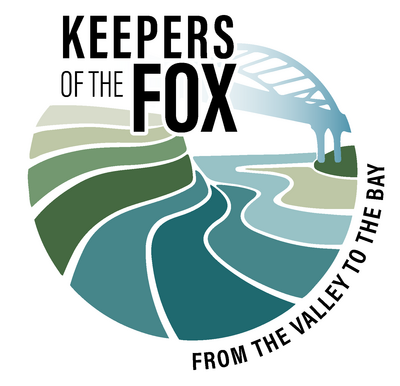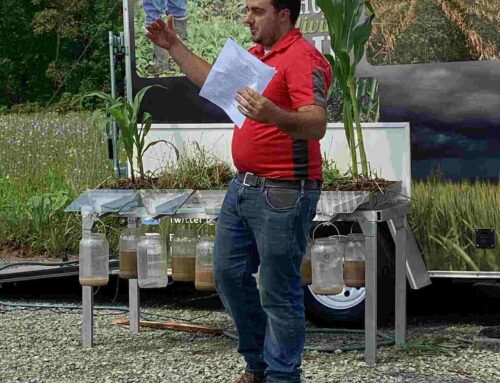As the temperatures drop and the water begins to freeze over, we often forget that our winter actions continue to impact water quality. From residential ditches to ice fishing lakes to trickling streams, the our activities in the winter months affect the water around us. As in the warmer months, there are simple action steps we can each take to sustain and protect the surface waters all around us.
Simple Step 1: Salt Management

Save money and keep salt from washing away by sweeping it up!
Be smart with salt!
When snow is in the forecast, we immediately start pulling out the winter maintenance tools like shovels and salt from the back of the garage and make a plan of when to clear the sideway and driveway. It’s easy to use too much salt or apply it at the wrong time, so consider these best practices for snow and ice removal this winter.
- Shovel first! Clear sidewalks and driveways before the snow has a chance to turn to ice.
- Use the right amount and spread it out! Contrary to popular belief, more salt isn’t better. A coffee mug of salt is enough to treat an entire 20 ft driveway or 10 sidewalk squares! When spreading, be sure to scatter it so there is space between the grains.
- Consider the temperature! When temperatures drop below 15 degrees, salt doesn’t work. Switch to sand or bird seed for traction.
Want to do more?
- Learn more about our chloride (salt) monitoring program
- Check out the about the monitoring results across the basin this season
- Talk to your employer or businesses you frequent about applying just the right amount of salt at the right times
- Contact NEWSC Coordinator Alyssa Reinke (alyssa@fwwa.org) to volunteer next season!
Simple Step 2: Prevent the Spread of Invasive Species
Even Icy Waters Host Aquatic Invasive Species!
Aquatic invasive plants and animals are resilient, even through cold temperatures. Invasive aquatic plants like curly-leaf pondweed and eurasian watermilfoil persist under the ice throughout winter and invasive organisms can be present in water or mud. To prevent the spread of AIS, take the same precautions you would during the warm fishing months:
- Inspect ice fishing equipment for attached aquatic plant, animals, or mud
- Remove all attached plants or animals
- Drain all water from buckets and containers
- Never move live fish away from a waterbody (fish out of water = dead)
- Dispose of unwanted bait in the trash

Invasives can spread in winter, too!
Want to learn more?
Check out this article by our Aquatic Invasive Species Coordinator, Chris Acy (chris@fwwa.org), for more information on the types of invasive species that survive winter temperatures, links to regulations, and tips to safely preserve winter bait.
Simple Step 3: Keep the Ground Covered

Corn stalks and ground cover keep soil in place
Conservation Agriculture Makes a Big Impact
While the fields seem barren in the winter months, the work that conservation farmers have put in during the growing season is under the snow! If you keep your eye out, you’ll see fields that are still covered with low growing crops, some that have bits of corn stalks left poking from the ground, and some that are fully covered by a grass-like crop. These fields have utilized cover crops (keeping the roots of a crop in the soil year round) and low or no tillage (not digging into and turning up the soil after harvest) to keep topsoil in place and build a healthy ecosystem under the surface. In traditional farming, after the fall harvest ofcrops, such as corn or soybeans, the soil surface of a field will be left bare until the next crop is planted and a new plant canopy is established. Here in Wisconsin, that next planting may be 5-7 months away. That’s a long time for the bare soil to be vulnerable to erosion caused by rainfall, snowmelt, or wind. For that reason, conservation-minded farmers utilize cover crops to have vegetation established and grown in the fall months, and remain in place during the winter. These farming practices are key to reducing pollutants from ending up in our waterways in the spring when the snow melts. When unprotected, the soil will be taken away with the the snow melt runoff; keeping the ground in place via a root system protects the soil needed to grow healthy crops as well as our local water!
Want to learn more?
Check out our Soil Health in Progress website for information on conservation farming techniques including cover crops, no/low tillage, and low disturbance manure application. Reach out to Justin Loerke, Basin Ag Coordinator (justin@fwwa.org), with questions about ag conservation in our basin.
We all have a part to play in protecting our local waterways!






